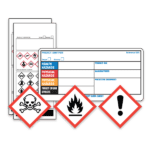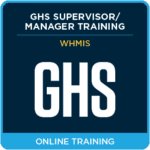
Safely Handling Hazardous Garden Chemicals: A Guide to Pesticides and Fertilizers
Gardening can be a rewarding and relaxing hobby, but a surprising number of chemical hazards can lurk in the garden shed. Many common aids to a good harvest, such as pesticides, herbicides, and fertilizers contain toxic substances that can be harmful to both humans and the environment. By understanding the risks and taking proper precautions, you can ensure a yummy supply of fresh summer fruits and veggies while minimizing the dangers posed by hazardous garden chemicals.
What Hazards Are Found in Home Gardens?
Many types of hazardous chemicals may be found in home gardens or lawn care. These include:
- Pesticides and herbicides are often used in home gardens to control pests and unwanted plants. Common examples include glyphosate, 2,4-D, and organophosphate insecticides. These chemicals can be toxic if not handled properly and can contaminate soil and water sources. For example, metaldehyde (slug killer) can be deadly to pets, wild animals and even humans if ingested.
- Fertilizers, both synthetic and organic, may contain high concentrations of nutrients like nitrogen, phosphorus, and potassium. Excessive use or improper application of fertilizers can lead to nutrient runoff that pollutes nearby waterways. Many may include oxidizing chemicals, which can be fire hazards if mixed with combustible materials such as sawdust or oil.
- Fungicides are used to prevent and treat fungal diseases in plants. Products containing chemicals like mancozeb, chlorothalonil, and copper-based compounds can be hazardous if not used according to instructions.
- Rodenticides are used to control mice, rats, and other small mammals. Baits containing ingredients like warfarin (rat poison) can endanger pets, wildlife, and even young children if not stored and applied safely.
But it’s not just the chemicals. Other health risks in the garden plot include:
- Injury from tools, especially power tools. The same protective equipment you wear at work – goggles, gloves, and safety shoes – can save you from a quick trip to Emergency.
- Sun exposure can cause burns and even an increased risk of skin cancer. Don’t forget to wear your sunhat and sunscreen while planting tomatoes or you may end up as red as one.
- Some garden plants, such as daffodil bulbs can be toxic if swallowed by children or those who don’t understand that not everything in a garden is edible.
Working Safely with Garden Chemicals
Garden chemicals will normally come with special labels to identify the hazards and explain safe use and handling. These will vary by country and by product use – for example, in Canada, pesticides are labelled under the “Pest Control Product Regulations” (PCPR), while other consumer chemicals are under the “Consumer Chemicals and Containers Regulations” (CCCR). In the U.S., pesticides are regulated by the Federal Insecticide, Fungicide and Rodenticide Act (FIFRA) and consumer products are regulated by the Consumer Product Safety Commission (CPSC) and the Federal Hazardous Substances Act (FHSA).
Don’t neglect to read these labels and take them seriously. If a pesticide label says, for example, a slug bait is poisonous and worse, has no antidote, take this seriously and follow instructions on how to keep it away from pets and children.
To understand how labels for pesticides and other hazardous chemicals work, check out the following sites:
- An explanation of U.S. pesticide labels
- The required elements on a Canadian pesticide label
- U.S. labelling requirements for consumer products under the Federal Hazardous Substances Act (FHSA)
- What the requirements are for Canadian hazardous consumer products under the CCCR
Precautions for Garden Chemicals
Each chemical is different, so once again always start by reading the label. Many products will have manufacturer hotlines on their labels for more information if you need it. While Safety Data Sheets (SDSs) are not mandatory for pesticides and consumer products, most suppliers will provide them on request, so if you need more information than the label contains, see if you can obtain an SDS.
Other good practices include:
- First, ALWAYS KEEP POISON CONTROL NUMBERS HANDY. In the United States, this is 1-800-222-1222. In Canada, the main number is 1-844-POISON-X (1-844-764-7669). If you’re in Québec, call 1-800-463-5060. People in Nunavut should contact their local health centre.
- If possible, keep the chemical in the original container. It will have the label in case of emergencies and should have safe closures. Putting toxic chemicals in food-labelled containers is a common cause of accidental poisonings, so never let them look like something you could eat.
- Speaking of food, don’t eat while working with chemicals and wash thoroughly when you’ve finished before having a snack.
- Always handle pesticides with care. Remember, even though they’re for consumer sale, they can be highly toxic if swallowed, inhaled, or left on the skin. It’s a good idea to use all recommended protective equipment, including gloves and a respirator when using them. Always wash thoroughly after handling, and launder clothes before reuse.
- Keep small children and pets away from where you’re working with chemicals.
- Keep containers fully closed when not in use. Make sure child-resistant caps are fully engaged.
Proper Storage and Disposal of Pesticides and Fertilizers
Garden chemicals should always be stored safely and disposed of in an environmentally-responsible manner.
Pesticides and fertilizers should be stored in a secure, well-ventilated area, such as a lockable shed. Keep them away from food, animal feed, and household items. The storage area should be cool and dry, and the chemicals should be kept out of direct sunlight. Containers should be tightly sealed and clearly labelled. Again, NEVER use containers labelled as food or drink to store hazardous chemicals.
When disposing of leftover pesticides and fertilizers, start by checking the instructions on the product label. Never pour them down drains or storm sewers. Contact your local hazardous waste management authority to find out about hazardous consumer waste collection programs in your area. Most municipalities will have hazardous waste drop-off sites where you can simply bring your products and have them disposed of for you. Again, never dispose of them in a manner that could contaminate soil, water, or air.
And before you reach for that container of toxic chemicals in the first place, ask yourself “is there another way to help my plants grow?” There are many low-hazard ways to protect your plants from pests and diseases that can hurt them. Check out this page from the Town of Saanich for some starters in non-toxic protection of plants.
First Aid and Emergency Response for Chemical Exposure
When faced with a chemical exposure incident, your first priority is to ensure the safety of both the victim and yourself. This involves immediately removing the affected person from the source of exposure, while also taking care that you aren’t exposed while doing so.
- First, call Poison Control if the victim doesn’t appear to be ill right away, or 911 if the victim is showing rapid symptoms.
- If possible, remove any contaminated clothing and thoroughly flush the affected areas with copious amounts of water are essential initial steps. Flush eyes with water for as long as possible when chemicals enter the eyes – at least fifteen minutes is usually recommended.
- Always base your first aid on advice from Poison Control, if possible, or the label on the container if they can’t be reached immediately.
- Inducing vomiting should only be done under the direction of professionals, and usually isn’t preferable to getting the person to emergency care as quickly as possible. Home remedies such as activated charcoal shouldn’t be used unless you are told to do so – the best solution to exposure to toxic chemicals is to get the victim to medical aid as soon as possible.
- If possible, take the container (or a clear picture of the label) with you to the hospital or emergency treatment center, so the medical professionals can determine exactly what chemicals the person has been exposed to.
Conclusions
Gardening is a gentle pastime that can put you in touch with nature. But if you use chemicals, remember that just because they can be sold to consumers that doesn’t mean they’re non-hazardous. Use chemicals only when necessary, handle them safely, and above all, read those labels!
Do you have any questions about labeling requirements for hazardous products? Our team of experts is just a call away for our customers at 855.734.5469 or send us an email, we’re happy to help.
Stay up to date and sign up for our newsletter!
We have all the products, services and training you need to ensure your staff is properly trained and informed.
 Safety Data Sheet Safety Data Sheet(SDS) Services |
 GHS Labels GHS Labels |
 GHS within WHMIS GHS within WHMISTraining Course |
References:
- U.S. Environmental Protection Agency, “Summary of the Federal Insecticide, Fungicide and Rodenticide Act (FIFRA),” https://www.epa.gov/laws-regulations/summary-federal-insecticide-fungicide-and-rodenticide-act
- Consumer Product Safety Commission, “Federal Hazardous Substances Act (FHSA) Requirements,” https://www.cpsc.gov/Business–Manufacturing/Business-Education/Business-Guidance/FHSA-Requirements
- Justice Canada, “Consumer Chemicals and Containers Regulations, 2001,” https://laws-lois.justice.gc.ca/eng/regulations/sor-2001-269/index.html
- Justice Canada, “Pest Control Product Regulations,” https://laws.justice.gc.ca/eng/regulations/SOR-2006-124/index.html
- America’s Poison Control Centers, “Who We Are,” https://www.aapcc.org/
- Health Canada, “Canada launches new toll-free 1-844 POISON-X number for poison centres,” https://www.canada.ca/en/health-canada/news/2023/03/canada-launches-new-toll-free-1-844-poison-x-number-for-poison-centres.html
- Health Canada, “Garden Safety – It’s Your Health,” https://www.canada.ca/en/health-canada/services/healthy-living/your-health/lifestyles/garden-safety.html
- Sick Kids, “Poison information centres in Canada,” https://www.aboutkidshealth.ca/poison-information-centres-in-canada
- Town of Saanich, “Alternatives to Pesticides,” https://www.saanich.ca/EN/main/community/natural-environment/pesticide-reduction/alternatives-to-pesticides.html





